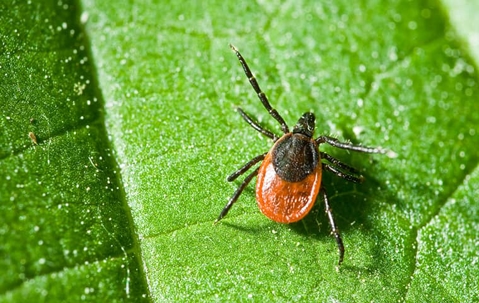Lyme disease is an infection that is transmitted through the bite of an infected tick. Different types of ticks have been known to transmit the disease, though the most common is the black-legged deer tick. Ticks are found in all 50 states and across all continents, except for Antarctica. They can carry other infections as well. The best defense against Lyme disease is to prevent tick bites. However, bites can still happen, especially if you live or spend time in wooded areas.
There is no substitute for knowledge. Brush up on these five important things to know about Lyme disease and keep you and your family safe this summer:
1. Ticks Can Be Removed Before They Cause Infection: A tick has to stay attached to your body for 36 to 48 hours before it can transmit the bacteria to you. If you’re able to remove the tick in 24 hours or less, it won’t have enough time to infect you. After spending time outdoors, inspect your skin for ticks. If you see one, a clean pair or tweezers can be used to pull out the pest. Unfortunately, being the size of sesame seeds, ticks are hard to spot.
2. Only Half Of People Get A Bullseye Rash: The bullseye rash has become synonymous with tick bites, though only 50% of people get the rash. It’s also possible that you won’t notice the rash, especially if it’s on your head or behind your ears. Don’t rely entirely on the rash to confirm that you’ve been bitten by a tick.
3. Getting A Diagnosis Is Not Easy: Diagnosing Lyme disease is complicated. Many of the symptoms can be attributed to other problems such as fibromyalgia or lupus. The most common side effects include headaches, stiff joints, joint pain, muscle aches, memory problems, and dizziness. There are blood tests available, but these aren’t always accurate. The most common test is the ELISA test, which can produce a false negative.
4. Not Everyone Has Symptoms Right Away: Another thing that makes Lyme disease mysterious is that not everyone has symptoms. When a person is first infected, they might feel like they have the flu. Then the symptoms go away. For others, it’s not until months, years or decades later that they show signs of the disease.
5. Diagnosis And Treatment Is Divided: The medical community is split over diagnosing and treating Lyme disease. Most health insurance carriers won’t cover the cost of chronic Lyme disease. Sadly, Lyme disease is growing at epidemic proportions here in the United States. A simple walk outdoors can send people on a whirlwind of doctor’s appointments, diagnoses and treatments.
This summer, be sure to take the proper precautions to protect you and your family from tick bites, such as by wearing a repellent with DEET and avoiding moist, humid environments near wooded areas. For more information about stopping ticks, visit cdc.gov

